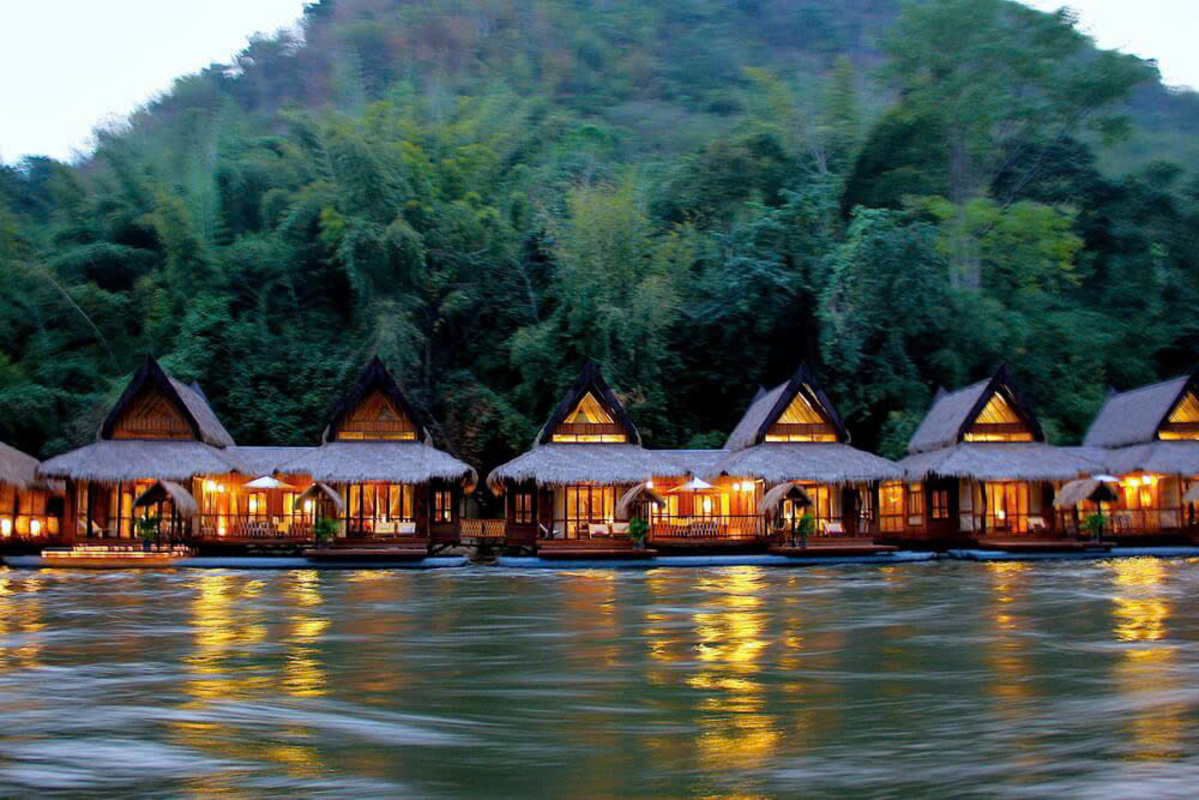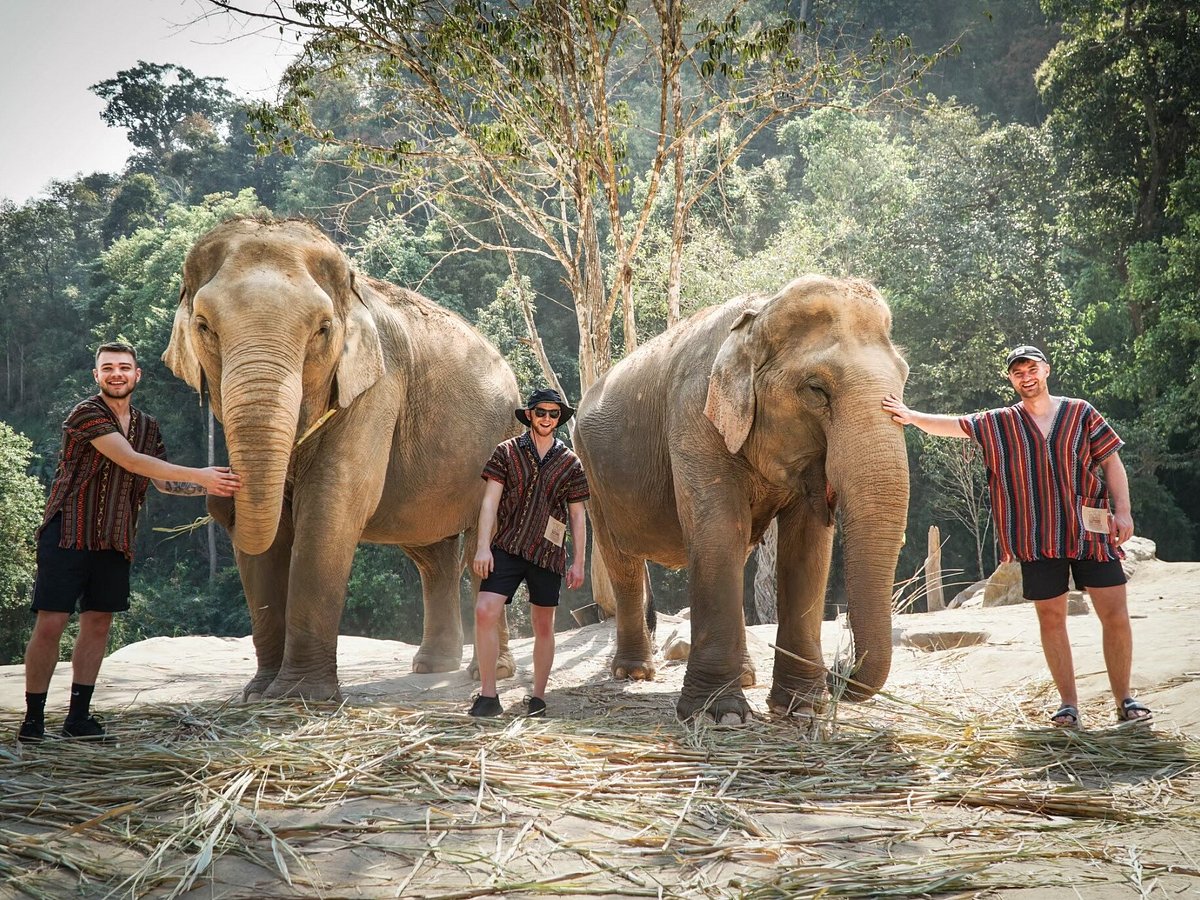1. Top things to do in Bangkok
Enjoy views of Bangkok on a sightseeing boat tour
Including a sightseeing boat tour in your Bangkok itinerary is an absolute must! The city's rich history and its reliance on its rivers for trade and commerce make these waterways a unique vantage point for observing Bangkok's charm.
Bangkok boasts a variety of rivers, some as prominent as the Chao Phraya and the Klong Saen Saeb, while numerous connecting canals on the Thonburi Klongs weave together various provinces and neighborhoods. Taking a boat tour along Bangkok's canals provides an incredible opportunity to both experience and gain insights into this vital natural resource within the city.
You can select from a range of options, including water taxis, canal boats, and private cruises, each offering a distinctive and memorable experience.
Take a Cooking Class
Participating in a cooking class in Thailand is a renowned activity, especially in Bangkok, and it's an absolute must-try. Since discovering how to prepare authentic Thai cuisine, we've embraced cooking Thai dishes at home. Enroll in a cooking course to learn the art and bring the flavors of Bangkok into your own kitchen, allowing you to recreate those delightful experiences whenever you like.

Thai Street Food – Eat Like a Local
Speaking of street food, when you venture to Bangkok, you absolutely must savor the delectable cuisine for which Thailand is renowned. Thai locals overwhelmingly prefer street food as it offers a cost-effective alternative to procuring numerous ingredients and preparing meals at home.
Relax and unwind at a Thai Spa
One of the most enriching yet budget-friendly experiences you can enjoy in Bangkok is indulging in a traditional Thai massage. Thai culture places great importance on massages as a cornerstone of well-being, and locals often incorporate them into their weekly routines, emphasizing their significance for health. To partake in this cherished Thai tradition, explore the myriad massage parlors scattered throughout the city, offering an accessible gateway to this cultural practice.
Take A Tuk Tuk Ride
One of the most exhilarating ways to navigate Bangkok is by embarking on a Tuk Tuk adventure. If you're a first-time visitor to Bangkok, be sure not to miss the opportunity to ride in one. Thailand is renowned for these three-wheeled marvels of transportation, expertly weaving through the city's bustling traffic. While the exhaust fumes can be substantial, we don't recommend relying on Tuk Tuks exclusively for transportation, but enjoying an occasional ride can be a delightful and fun experience.
Go shopping at Siam Shopping Mall
Bangkok boasts some of Southeast Asia's most expansive shopping malls, offering a diverse shopping experience that caters to both high-end brand enthusiasts and bargain hunters alike. The MBK Centre, in particular, stands out as a destination for great deals. This is our go-to spot for procuring Thai SIM cards and an excellent choice for electronics shopping. In fact, we've even acquired a camera from the MBK Center during one of our visits.
Visit a Floating Market
Just outside Bangkok, you'll discover two enchanting floating markets that make for a delightful day excursion. Between the two options, Damnoen Saduk Floating Market and Amphawa, I found the latter to be less crowded with tourists, offering a more authentic and immersive experience.
Maeklong Railaway market
Perhaps one of the most extraordinary experiences you can have, not just in Bangkok but in the world, is a visit to the Maeklong Railway Market, situated in the Samut Songkhram province.
Dating back to 1905, this market originally served as a hub for fishermen to sell their daily catches, a tradition that continues today. However, a remarkable twist occurred when railway tracks were laid right through the heart of this bustling marketplace.
Today, curious travelers can easily reach this one-of-a-kind market by Skytrain or car. As they explore the market, they'll encounter a vibrant array of stands and stalls peddling food, goods, and fruits, all while a functioning railway line runs directly through the heart of the market—a truly remarkable sight to behold.

Experience Bangkok's nighttime allure while dining on a boat tour
Explore a dinner boat tour along the Chaophraya River, where you can savor Thai cuisine amidst exceptional service and atmosphere. This unique experience offers a captivating perspective of Bangkok by night, all from the vantage point of one of its iconic rivers.

Sampeng Lane Market in Chinatown
Chinatown is a hot spot for food enthusiasts in Bangkok. If you're on the hunt for a distinctive shopping adventure, don't miss exploring the quaint walking street nestled within Chinatown. Here, shoppers can uncover a treasure trove of merchandise at wholesale rates, spanning fabrics, electronics, toys, beauty products, and an array of other items.
2. Weather
Bangkok experiences a tropical monsoon climate, characterized by consistent heat and humidity throughout the year. For the most comfortable visit, it is advisable to plan your trip between November and March when the city enjoys a respite from the intense heat and humidity. However, it's important to note that Thailand's tropical climate can result in temperatures exceeding 35°C (95°F) on any day, regardless of the season.
3. Transportation:
3.2. How to get there?
Bangkok boasts extensive global air connectivity through its two airports. Suvarnabhumi Airport, located 25 kilometers to the east of the city, stands as the largest international airport in Bangkok and serves as the primary hub for both international and domestic airlines. This major transportation hub is seamlessly linked to the city center via buses, taxis, and a high-speed rail service.
Similarly, Don Mueang Airport, positioned 24 kilometers to the north, is another essential air gateway for travelers to and from Bangkok.
Furthermore, Bangkok enjoys superb railway connections, not only within Thailand but also with neighboring countries such as Malaysia, Cambodia, and Laos. The bustling Hua Lamphong Railway Station serves as Bangkok's main railway terminal, welcoming trains from neighboring nations and various regions within Thailand. Additionally, the Thonburi Train Station (formerly known as Bangkok Noi Station) caters to local and nearby train services, further enhancing Bangkok's comprehensive transportation network.
3.2. Ways to get around the city:
Tuk-Tuk:
One of Thailand's most emblematic modes of transportation, the Tuk-Tuk, essentially auto-rickshaws, offers not only an enjoyable way to navigate the city but also a practical and budget-friendly option. The fare for a Tuk-Tuk ride fluctuates based on the distance covered, yet an ordinary journey typically amounts to roughly 30 baht. It's advisable to engage in a friendly haggle with the driver to secure a discount of at least 5-10 baht from the initially quoted fare.
Motorbike Taxi:
Motorbike taxis are a prevalent mode of transportation in many Southeast Asian urban centers, including Bangkok. This economical and practical choice is favored by numerous residents. For solo adventurers, motorbike taxis offer a thrilling and speedy means of getting around. Look for motorbike taxi drivers sporting numbered orange vests at most street corners near office complexes and shopping centers.
The cost of your journey is determined by factors such as the distance covered, the time of day, and your negotiating skills. A typical ride spanning 5-7 kilometers will typically range between 20 baht ($0.57) and 30 baht ($0.86), making it a budget-friendly option for travelers.
Taxi:
Once the BTS, MRT, and riverboats have ceased their operations for the day, taxis emerge as a convenient means of transportation within Bangkok. They are readily available throughout the city, with a notable presence near popular tourist sites, commercial hubs, and hotels.
Typically, the initial fare for the first few kilometers is 35 baht, after which it incrementally rises. A smart practice to ensure fair pricing is to kindly request taxi drivers to activate their meters, ensuring transparency and safeguarding your budget while journeying via taxis in Bangkok.
BTS SkyTrain:
The BTS Skytrain stands out as one of the most efficient modes of transportation for navigating Bangkok. It comprises two primary lines: the Silom Line, which spans from west to south, linking the National Stadium in the bustling Siam shopping district to Bang Wa in Thonburi (located on the opposite side of the river), and the Sukhumvit Line, which extends from north to east, connecting Mo Chit to Bearing.
The strategic intersection point of these two lines occurs at Siam Station, enhancing connectivity within the city. Additionally, these BTS lines provide convenient interchanges with the MRT system at both Sala Daeng and Asok stations, further streamlining travel throughout Bangkok.
Bangkok MRT ( Underground Train)
The Bangkok MRT offers yet another swift and efficient way to traverse the city. Often referred to as the subway, it currently operates a single line, known as the MRT Blue Line, which serves as a vital artery for commuters and tourists alike. This comprehensive line encompasses 18 stations, strategically positioned to include most of the city's popular attractions.
With trains departing every 5 to 7 minutes, the MRT Blue Line ensures frequent and accessible transportation. Notably, it interconnects seamlessly with the BTS Skytrain at key junctions, such as Sukhumvit and Silom stations, enhancing the city's overall transit network.














